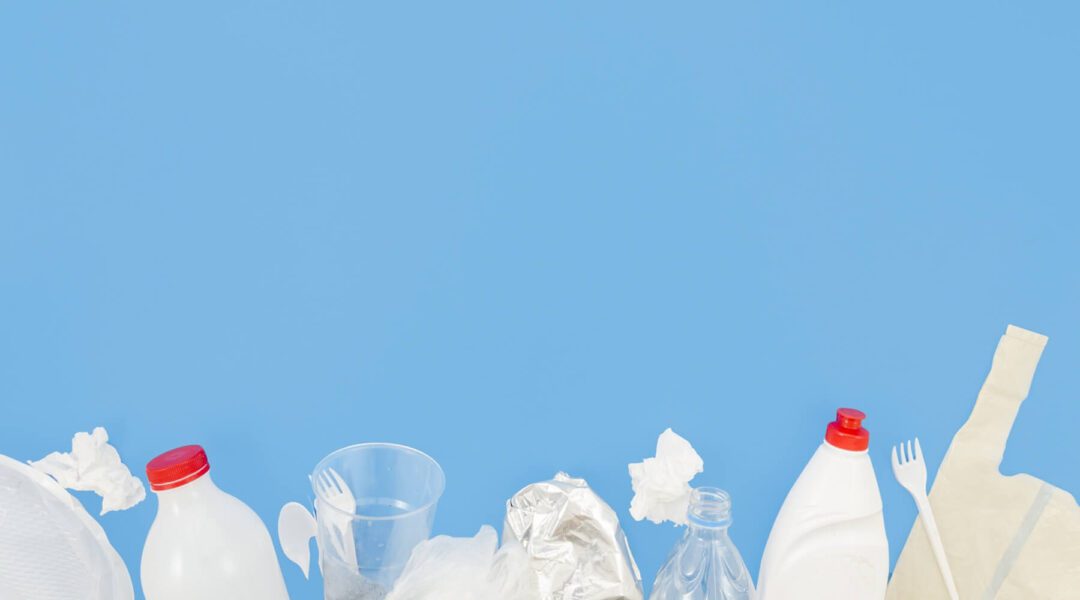general
The Impact of Single-Use Plastics
Okay, let’s talk about something important. You know those little things we use every day? Like the straw in our coffee, the bag for our food, the wrapper on our candy? They might seem small, but they’re adding up to a big problem.
We’ve gotten used to using plastic for everything, but it’s hurting our world. It’s making us sick, messing up our land and water, and even changing our weather.
But there’s good news! We can fix this. We can make changes in our own lives and ask our leaders to do the same.
What are Single-Use Plastics?
Single-use plastics are things made primarily from special chemicals that come from oil, and they’re designed to be thrown away right after we use them—often, in just a few minutes, such as plastic bags, bottles, and food wrappers. These plastics are mostly used for packaging and things we use to eat or drink. They’re light, cheap, and strong, which is why they became so popular.
But here’s the catch, plastic was invented long ago, but it really took off in the 1970s. Companies started replacing things like paper bags and glass bottles with plastic.
Since then, we’ve made a huge amount of plastic – over nine billion tons! And half of that was made in just the last twenty years. The problem is that plastic doesn’t just disappear. It stays around for thousands of years, polluting our land and water.
Now, plastic has important uses, like medical tools or special straws for people who need them. But those are just a small part of the problem. Most of the plastic we use is for things we only need for a little while, like packaging.
Why is Single-Use Plastic a Problem?
We’re used to buying goods that are cheap and easy to use, even if they don’t last long. This is called a “throwaway culture” and single-use plastic is a big part of it.
Companies make a lot of money selling products that look nice but don’t last very long. They even make things cheap so we’ll keep buying more. And lots of things we buy come in fancy packaging that we don’t really need, just to make them look good.
This habit of throwing things away is causing a big problem. We’re making so much trash! The world made over 460 million tons of plastic in 2019. That’s twice as much as we made in the year 2000!
Single-Use Plastics and Plastic Trash
The most common plastic trash we find in the world is from cigarette butts. Then comes food wrappers, bottles, bottle caps, shopping bags, straws, and stirrers.
Now, we’re also finding tiny pieces of plastic called microplastics. These include threads from synthetic clothing and tiny beads that people add to their products.
The best way to stop all this plastic trash is to use less plastic in the first place. After that, we can recycle or compost what we can. But each location has different rules, so make sure you know what to do where you live.
Recycling Isn’t Enough
Recycling helps us use less plastic, which means less trash. For example, a type of plastic called PET, which is used for most water and soda bottles, can be turned into things like clothes or car parts!
But most plastic doesn’t get recycled. The OECD (Organisation for Economic Co-operation and Development) found that only about 9% of plastic gets recycled. This means that most of it ends up in landfills or nature.
It’s even harder to recycle single-use plastics, like those little straws, bags, and forks. They’re so small that they get stuck in the recycling machines. Many places don’t even take them!
Microplastics | A Hidden Danger
Plastic doesn’t really disappear. It just gets smaller and smaller. When plastic gets worn down or washed, or when it’s hot or in the sun, it breaks into tiny pieces. These tiny pieces are called microplastics, and they’re smaller than 5 millimeters. They’re so small, it’s hard to see them.
We’re even finding even tinier pieces of plastic called nanoplastics. Microplastics are also made on purpose, like the little beads in face scrubs and the fibers in some clothes. Microplastics end up everywhere, even in the water we drink, the soil we grow food in, and the animals that we eat. They’ve been found in the mountains and even at the bottom of the ocean.
For wildlife, animals can get very sick from eating microplastics. They can get stuck in their stomachs or hurt their insides. Plants can also be harmed when microplastics get into the soil.
Health Harms from Microplastics
When we eat microplastics, we also eat the chemicals that are added to plastics. These chemicals can make us sick. Many of them mess up our hormones! Research has shown that being exposed to these chemicals can lead to problems with how our bodies work, like trouble having babies, and even cancer.
One example of these chemicals is called DEHP. It’s added to shower curtains and garden hoses to make them more flexible. Health Canada has classified DEHP as a probable human carcinogen.
Canadian scientists are actively researching microplastics in the environment, including our food supply. Health Canada and Environment and Climate Change Canada are working to understand how microplastics are getting into our food and what the potential health risks are. The country is also taking steps to reduce microplastic pollution. For example, the Canadian government has banned microbeads in personal care products.
We are still learning about what happens when microplastics get into our bodies. We don’t know exactly how they will affect us in the long run.
Plastic Hurts Wildlife
Scientists found that every animal washed up on shores had plastic in their stomachs! That’s scary! Each year, plastic kills millions of sea animals like birds, mammals, turtles, and fish.
Plastic doesn’t just disappear. It can take hundreds of years to break down into tiny pieces that animals can eat. Plastic is poisonous and can make animals sick or kill them.
Animals can get stuck in plastic, or plastic can hurt them. It also messes up their homes, so it’s hard for them to live and have babies. That means some animals are getting fewer and fewer.
We’re all affected by plastic pollution.
How Can We Use Less Plastic?
We can all make a difference! Think about how much plastic we use every day. Use reusable water bottles, bags, and straws. There are even reusable bags that are like ziplock bags, made from stuff that doesn’t hurt the planet!
Making meals at home instead of eating out can also help cut down on plastic use. And remember, there are lots of great alternatives to plastic products, like wooden accessories. Tell your friends and family about the plastic problem and find out more about how to live with less waste.
There are lots of great ideas out there! When we work together, we can make a difference. We can all do our part to make sure our planet is healthy for us and for all the animals and plants that live here.




 Français
Français